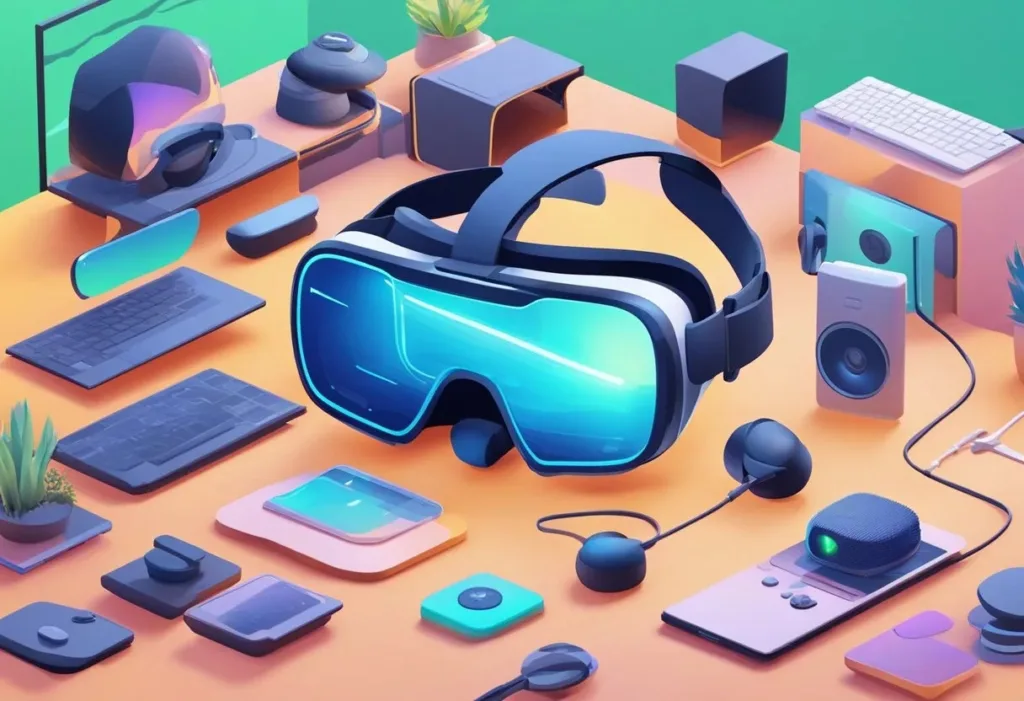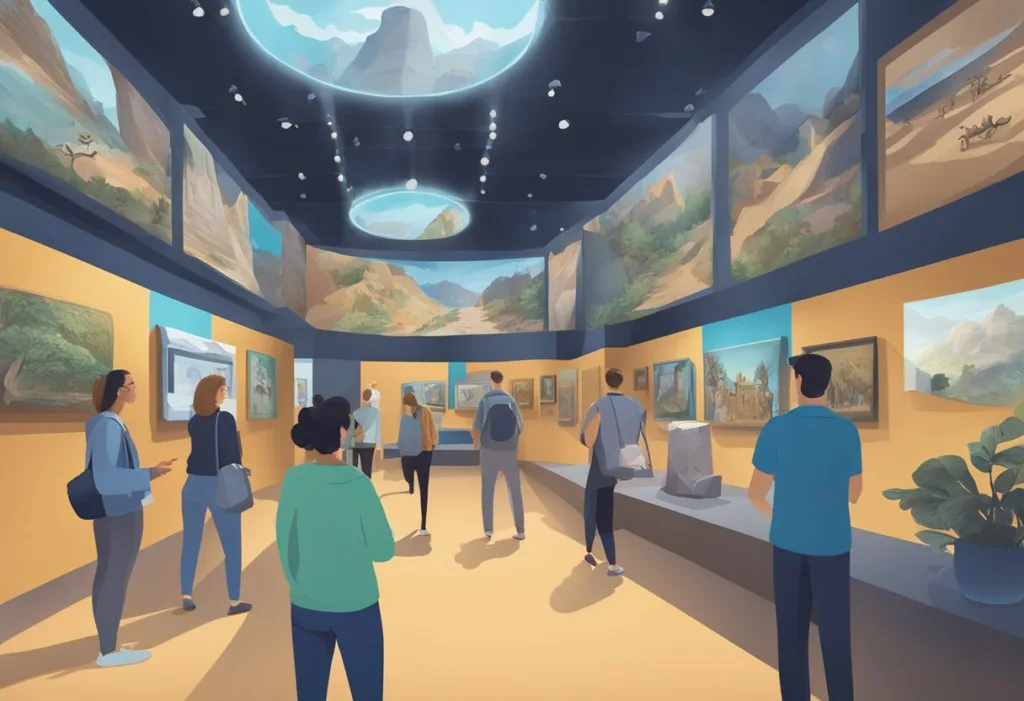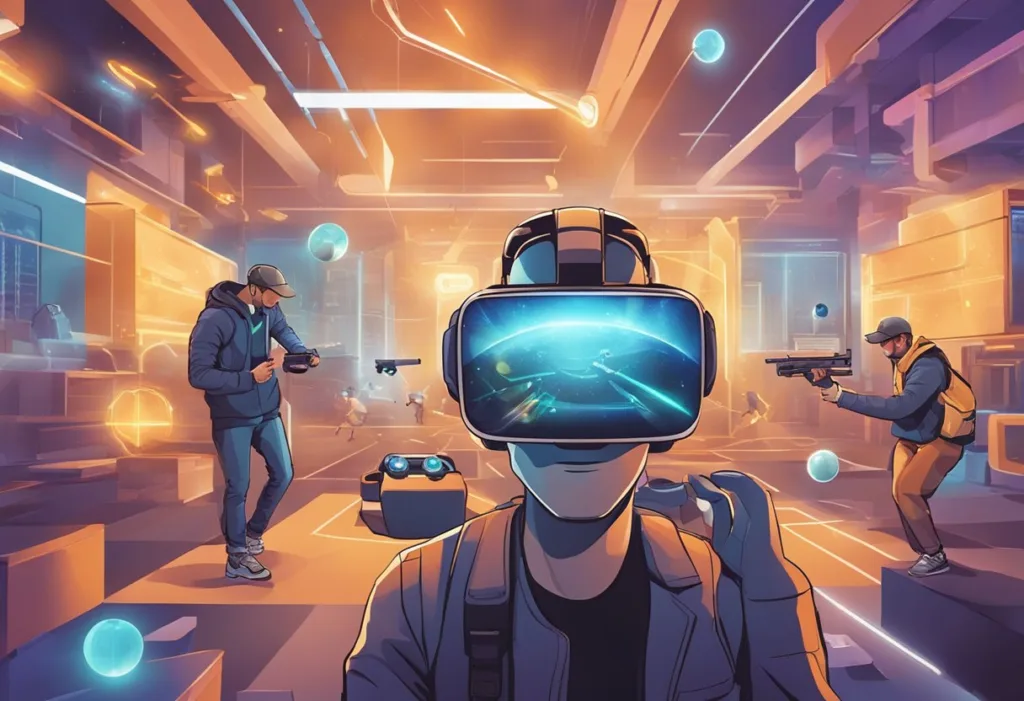Innovative AR ecommerce examples are already making waves in the industry. Companies like Sephora, IKEA, and Amikasa are using AR to enhance the customer experience. For example, Sephora’s Virtual Artist app allows customers to virtually try on makeup, while IKEA’s Place app lets customers see how furniture would look in their own homes. These examples demonstrate how AR can be used to engage customers and help them make more informed purchasing decisions. In this article, I will share with you 10 augmented reality ecommerce examples that you can apply to your ecommerce business to boost sales
While AR ecommerce has many benefits, there are also challenges and considerations to keep in mind. For example, implementing AR technology can be costly and time-consuming. Not all customers may have access to the necessary technology to use AR.
The Rise of AR in Ecommerce
AR technology allows customers to view products in a virtual environment before making a purchase. This technology has been particularly useful in the fashion and beauty industries, where customers can try on clothes and makeup virtually. AR technology has also been used in the furniture industry, allowing customers to visualize how furniture will look in their homes before making a purchase.
Impact of AR on Online Shopping
AR has had a significant impact on the online shopping experience. It has made it easier for customers to make informed decisions about their purchases, reducing the number of returns and increasing customer satisfaction. AR also allows businesses to showcase their products in a unique and interactive way, giving them a competitive edge in the market.
AR Shopping Market Growth
The AR shopping market is expected to continue to grow in the coming years. According to TechJury, it is estimated that there will be 1.73 billion AR users on mobile by 2024. 70% of consumers believe that AR can provide them with benefits, and 57% of customers say they are more likely to buy from a brand if they are using AR. As more businesses adopt AR technology, we can expect to see a significant increase in the AR shopping market.
AR technology has revolutionized the ecommerce industry, providing customers with a unique and interactive shopping experience. Its impact on the market is undeniable, and its growth is expected to continue in the coming years. As a business owner, it is important to consider implementing AR technology to stay competitive in the market and provide your customers with the best possible shopping experience.
10 Augmented Reality Ecommerce Examples
Here are 10 augmented reality eCommerce examples:
- Virtual fitting rooms for apparel shopping
- AR furniture placement apps
- Beauty product try-on apps
- Virtual watch try-on experience
- AR car visualization and customization
- Interactive AR books and games for educational products
- AR-enhanced grocery shopping with nutritional information
- Virtual interior design consultations
- Jewelry try-on and customization apps
- AR for DIY and home improvement guidance
Virtual Fitting Rooms for Apparel Shopping
Virtual fitting rooms leverage AR technology to allow customers to try on clothes virtually. These solutions use the customer’s webcam to capture their image and then superimpose the chosen apparel items onto their body. This technology helps in visualizing how the clothes will look and fit without the need for physical trial, thus replicating the in-store experience online. Virtual fitting rooms aim to reduce the uncertainty associated with online apparel shopping, leading to increased customer satisfaction, reduced return rates, and a more streamlined shopping experience.
AR Furniture Placement Apps
AR furniture placement apps enable customers to visualize how furniture pieces would look in their own space before making a purchase. Users can select furniture from an online catalog and place 3D models of the items in their room using their smartphone or tablet camera. This helps customers assess the size, style, and fit within their existing layout, minimizing the risk of purchasing items that do not match their space or expectations. These apps enhance the customer’s decision-making process and can significantly increase the confidence in buying large-ticket items online.
Beauty Product Try-On Apps
Beauty product try-on apps use augmented reality to allow customers to see how makeup products would look on their face in real-time. Users can try different shades and styles of products such as lipstick, eyeshadow, or foundation with the help of their device’s camera. This interactive experience not only makes online shopping for beauty products more engaging but also provides a more accurate representation of the products, leading to better-informed purchase decisions.
Virtual Watch Try-On Experience
The virtual watch try-on experience uses AR to allow customers to see how a watch would look on their wrist. By using a smartphone or tablet camera, users can try on different watch models, styles, and sizes, which helps them to determine the best fit and design for their preferences. This immersive experience can increase customer engagement and satisfaction, as it provides a realistic preview of the watch without the need to visit a store.
AR Car Visualization and Customization
AR car visualization and customization tools enable customers to explore and customize vehicles in a virtual environment. Users can view different car models, change colors, wheels, and other features, and see the results in real-time. This immersive experience allows customers to create their ideal car and see how it would look from all angles, which can be a powerful tool in the decision-making process when purchasing a new vehicle.
Interactive AR Books and Games for Educational Products
Interactive AR books and games bring educational content to life, providing a more engaging learning experience for children and adults alike. By scanning pages or images with a device, users can unlock 3D animations, interactive scenes, or educational games that complement the printed material. This integration of AR into educational products can enhance understanding, retention, and enjoyment of the content.
AR-Enhanced Grocery Shopping with Nutritional Information
AR-enhanced grocery shopping apps can provide customers with additional nutritional information and product details while they shop. By scanning products with their smartphone, users can access an AR overlay that displays information such as calorie content, ingredients, or dietary restrictions. This can help customers make healthier and more informed choices while shopping for groceries.
Virtual Interior Design Consultations
Virtual interior design consultations use AR to help customers visualize design changes in their homes. Interior designers can create virtual representations of room layouts, color schemes, and furniture arrangements, which customers can view in their actual space through their device’s camera. This service can help customers see the potential of their space without the need for physical samples or mock-ups, facilitating the decision-making process for home renovations and decor changes.
Jewelry Try-On and Customization Apps
Jewelry try-on and customization apps allow customers to virtually try on rings, necklaces, or other jewelry pieces. Users can see how the items look on them and even customize aspects such as gemstones, materials, or designs. These apps can provide a personalized shopping experience and help customers make confident decisions when purchasing fine jewelry online.
AR for DIY and Home Improvement Guidance
Augmented reality can provide DIY enthusiasts and home improvers with real-time guidance and support. AR apps can overlay step-by-step instructions for tasks such as painting, assembling furniture, or installing fixtures directly onto the user’s field of view. This hands-free assistance can simplify complex projects, reduce errors, and enhance the overall DIY experience.
Innovative AR Ecommerce Examples
Augmented reality (AR) has become increasingly popular in ecommerce, allowing customers to visualize products before making a purchase. Here are a few examples of innovative AR ecommerce implementations.
Ikea Place and Furniture Visualization
Ikea Place is an app that uses AR to allow customers to visualize furniture in their home before making a purchase. The app uses the camera on a smartphone or tablet to place furniture in the room and adjust the size and position as needed. This allows customers to see how the furniture will look in their space before making a purchase. The app also allows customers to take photos and share them with others for feedback.
Sephora’s Virtual Artist for Cosmetics
Sephora’s Virtual Artist uses AR to allow customers to try on makeup virtually. The app uses the camera on a smartphone or tablet to scan the customer’s face and apply makeup virtually. Customers can choose from a variety of different makeup products and colors to see how they would look before making a purchase. This allows customers to try on makeup without having to physically apply it, which can be time-consuming and messy.
Nike’s Sneaker Try-On
Nike’s Sneaker Try-On uses AR to allow customers to try on sneakers virtually. The app uses the camera on a smartphone or tablet to scan the customer’s foot and superimpose a virtual sneaker on it. Customers can see how the sneaker looks on their foot and adjust the size and color as needed. This allows customers to try on sneakers without having to physically put them on, which can be time-consuming and uncomfortable.
Enhancing Customer Engagement
To succeed in the highly competitive eCommerce industry, it’s crucial to engage customers and keep them interested in your products and brand. Fortunately, augmented reality (AR) technology offers many opportunities to enhance customer engagement and create memorable shopping experiences.
Gamification and Shopping
One way to increase customer engagement is by incorporating gamification elements into your eCommerce platform. Gamification involves adding game-like features such as points, rewards, and challenges to encourage users to interact with your brand and products. AR technology can take gamification to the next level by creating immersive experiences that blur the lines between virtual and physical reality.
For example, you can use AR to create scavenger hunts or treasure hunts that encourage customers to explore your products and website. You can also create AR games that allow users to interact with your products in unique and engaging ways. By incorporating gamification elements into your eCommerce platform, you can increase user engagement, boost brand loyalty, and drive more sales.
Social Media Integrations
Social media is another powerful tool for enhancing customer engagement and building brand awareness. By integrating AR technology with popular social media platforms such as Snapchat and Facebook, you can create interactive experiences that allow users to share their experiences with their friends and followers.
For example, you can create AR filters that allow users to try on virtual versions of your products and share their photos on social media. You can also create AR experiences that allow users to interact with your products in unique and engaging ways, such as virtual try-ons or product demonstrations. By leveraging the power of social media and AR technology, you can create buzz around your brand and products and reach a wider audience.
Virtual Showrooms and Demonstrations
Finally, AR technology can be used to create virtual showrooms and product demonstrations that allow customers to experience your products in a more immersive and engaging way. By creating virtual versions of your products, you can showcase their features and benefits in a way that is more compelling and memorable than traditional product photos and descriptions.
For example, you can create virtual showrooms that allow customers to explore your products in a 360-degree environment. You can also create AR product demonstrations that allow customers to see how your products work and how they can benefit from using them. By creating these immersive experiences, you can increase customer engagement, boost brand loyalty, and drive more sales.
Boosting Sales and Conversions
Augmented reality (AR) is a powerful tool that can be used to boost sales and conversions in ecommerce. By providing customers with a more immersive and interactive shopping experience, AR can help reduce returns, increase satisfaction, and drive purchase decisions.
Reducing Returns and Increasing Satisfaction
One of the biggest challenges facing ecommerce retailers is the high rate of returns. AR can help address this issue by allowing customers to see how a product will look and fit in their space before making a purchase. This can help reduce the number of returns and increase customer satisfaction.
Personalization and Customization
AR can also be used to provide customers with a more personalized and customized shopping experience. By allowing customers to visualize products in their own space and customize them to their liking, retailers can increase engagement and drive sales.
Conversion Rates and Analytics
AR can also help improve conversion rates and provide valuable analytics for ecommerce retailers. By tracking how customers interact with AR experiences, retailers can gain insights into what products are most popular, what features are most important to customers, and how to optimize their online shopping experience.
AR has the potential to revolutionize the way we shop online. By providing customers with a more immersive and interactive shopping experience, retailers can drive sales, reduce returns, and increase customer satisfaction.
Challenges and Considerations
When implementing augmented reality (AR) in eCommerce, there are several challenges and considerations to keep in mind. Balancing immersion with usability, privacy and data security, and overcoming technical limitations are just a few of the factors to consider.
Balancing Immersion with Usability
AR capabilities can provide an immersive experience for customers, but it is important to balance this with usability. The AR experience should be easy to use and intuitive, so customers do not become frustrated or confused. Providing clear instructions and tutorials can help customers navigate the AR experience.
Privacy and Data Security
When using AR in eCommerce, privacy and data security are important considerations. AR technology may require access to a customer’s camera, microphone, or other personal data. It is important to ensure that this data is kept secure and that customers are informed about how their data is being used. Implementing strong data security measures, such as encryption and secure servers, can help protect customer data.
Overcoming Technical Limitations
AR in eCommerce may face technical limitations, such as compatibility issues with certain mobile devices or slow internet speeds. It is important to consider these limitations when implementing AR and to provide alternative options for customers who may not be able to use the AR experience. Providing a seamless experience across all devices and internet speeds can help ensure that all customers can benefit from the AR experience.
Implementing AR in eCommerce can provide many benefits, but it is important to consider the challenges and considerations involved. Balancing immersion with usability, ensuring privacy and data security, and overcoming technical limitations are just a few of the factors to keep in mind when implementing AR in eCommerce.
Frequently Asked Questions
How can augmented reality enhance the shopping experience in online retail?
Augmented reality (AR) enhances the shopping experience in online retail by allowing customers to visualize products in a more realistic and interactive way. AR technology allows customers to see how products would look in their own environment, which can help them make more informed purchasing decisions. Customers can also interact with products in a more engaging way, which can lead to increased sales and customer satisfaction.
What are some successful implementations of AR by major eCommerce brands?
Major eCommerce brands such as IKEA, Sephora, and Amikasa have successfully implemented AR technology in their online retail platforms. IKEA’s AR app, IKEA Place, allows customers to visualize furniture in their own homes before making a purchase. Sephora’s Virtual Artist app uses AR to allow customers to try on makeup virtually. Amikasa’s AR app allows customers to see how furniture would look in their own space before making a purchase.
In what ways can AR be integrated into an eCommerce platform?
AR can be integrated into an eCommerce platform in a variety of ways. One way is to use AR to allow customers to visualize products in their own environment, as IKEA does with its IKEA Place app. Another way is to use AR to provide customers with more information about products, such as nutritional information for food products. AR can also be used to create interactive experiences, such as virtual try-ons for clothing and makeup products.
What are the benefits of using AR for product visualization in eCommerce?
Using AR for product visualization in eCommerce has several benefits. It allows customers to see how products would look in their own environment, which can help them make more informed purchasing decisions. It also provides customers with a more engaging and interactive shopping experience, which can lead to increased sales and customer satisfaction. Using AR for product visualization can help reduce returns by allowing customers to see how products would look before making a purchase.
Can you provide case studies of augmented reality applications in retail?
One case study of an augmented reality application in retail is IKEA’s IKEA Place app. The app allows customers to visualize furniture in their own homes before making a purchase. Another case study is Sephora’s Virtual Artist app, which uses AR to allow customers to try on makeup virtually. Both of these applications have been successful in increasing sales and customer satisfaction.
How does augmented reality in eCommerce impact customer buying decisions?
Augmented reality in eCommerce can impact customer buying decisions by providing customers with a more realistic and interactive shopping experience. By allowing customers to visualize products in their own environment, AR can help customers make more informed purchasing decisions. The interactive nature of AR can lead to increased engagement and customer satisfaction, which can result in increased sales.














